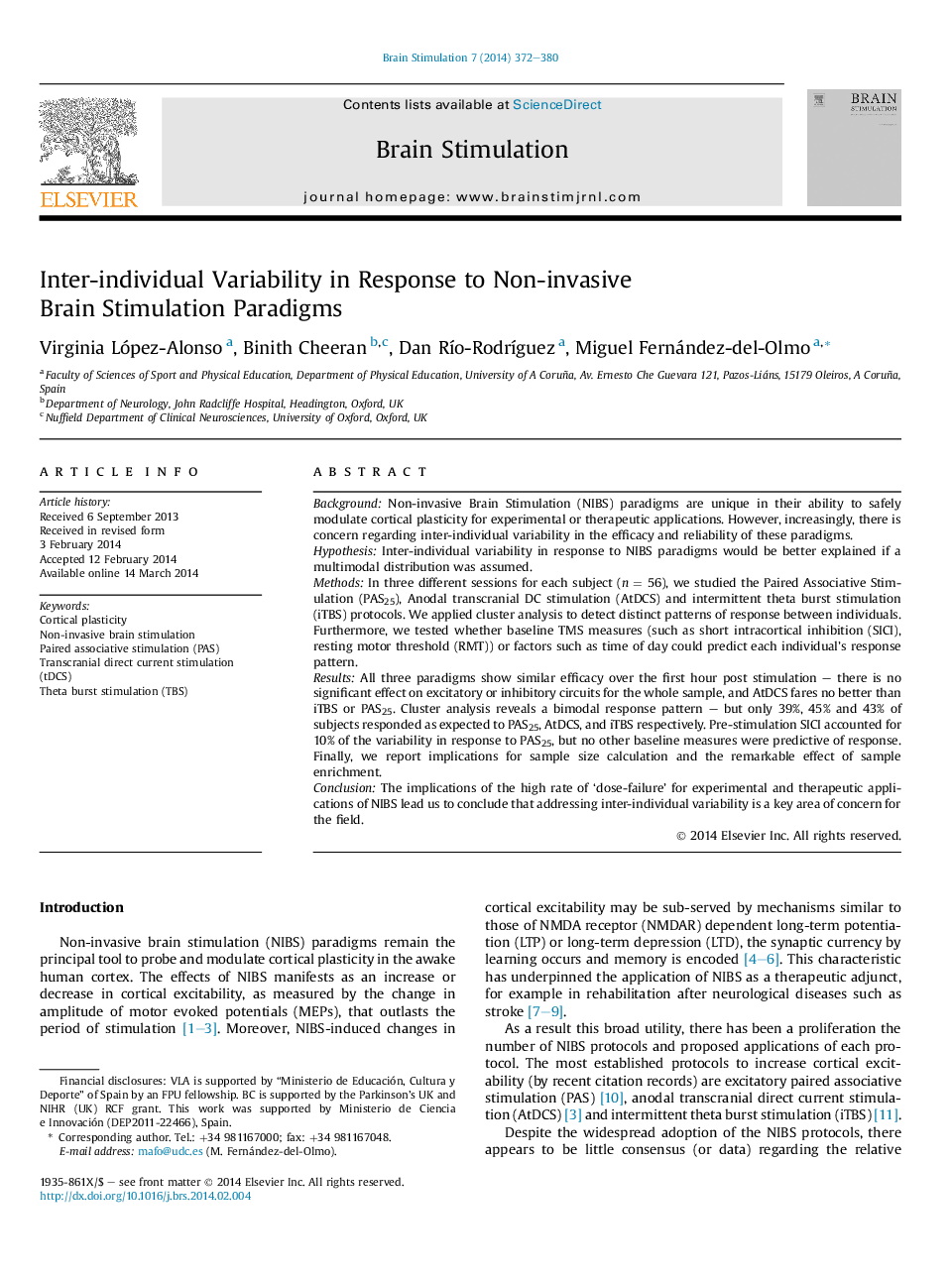| Article ID | Journal | Published Year | Pages | File Type |
|---|---|---|---|---|
| 3038775 | Brain Stimulation | 2014 | 9 Pages |
BackgroundNon-invasive Brain Stimulation (NIBS) paradigms are unique in their ability to safely modulate cortical plasticity for experimental or therapeutic applications. However, increasingly, there is concern regarding inter-individual variability in the efficacy and reliability of these paradigms.HypothesisInter-individual variability in response to NIBS paradigms would be better explained if a multimodal distribution was assumed.MethodsIn three different sessions for each subject (n = 56), we studied the Paired Associative Stimulation (PAS25), Anodal transcranial DC stimulation (AtDCS) and intermittent theta burst stimulation (iTBS) protocols. We applied cluster analysis to detect distinct patterns of response between individuals. Furthermore, we tested whether baseline TMS measures (such as short intracortical inhibition (SICI), resting motor threshold (RMT)) or factors such as time of day could predict each individual's response pattern.ResultsAll three paradigms show similar efficacy over the first hour post stimulation – there is no significant effect on excitatory or inhibitory circuits for the whole sample, and AtDCS fares no better than iTBS or PAS25. Cluster analysis reveals a bimodal response pattern – but only 39%, 45% and 43% of subjects responded as expected to PAS25, AtDCS, and iTBS respectively. Pre-stimulation SICI accounted for 10% of the variability in response to PAS25, but no other baseline measures were predictive of response. Finally, we report implications for sample size calculation and the remarkable effect of sample enrichment.ConclusionThe implications of the high rate of ‘dose-failure’ for experimental and therapeutic applications of NIBS lead us to conclude that addressing inter-individual variability is a key area of concern for the field.
